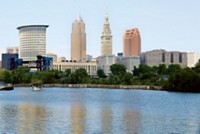Advertisement
Grab your lab coat. Let's get started
Welcome!
Welcome!
Create an account below to get 6 C&EN articles per month, receive newsletters and more - all free.
It seems this is your first time logging in online. Please enter the following information to continue.
As an ACS member you automatically get access to this site. All we need is few more details to create your reading experience.
Not you? Sign in with a different account.
Not you? Sign in with a different account.
ERROR 1
ERROR 1
ERROR 2
ERROR 2
ERROR 2
ERROR 2
ERROR 2
Password and Confirm password must match.
If you have an ACS member number, please enter it here so we can link this account to your membership. (optional)
ERROR 2
ACS values your privacy. By submitting your information, you are gaining access to C&EN and subscribing to our weekly newsletter. We use the information you provide to make your reading experience better, and we will never sell your data to third party members.
Environment
Water, Water
by Rudy M Baum
July 4, 2011
| A version of this story appeared in
Volume 89, Issue 27
It’s become something of a truism that water scarcity will be as important an issue worldwide in the 21st century as finding alternatives to fossil fuels. A new book, “The Big Thirst: The Secret Life and Turbulent Future of Water” by Charles Fishman, convincingly drives that point home with a plethora of data on water use and interviews with people on the front lines of providing water for uses ranging from agriculture to advanced computer chip manufacturing to human consumption.
One of the central themes that Fishman develops and documents in “The Big Thirst” is that humans’ relationship to water is extraordinarily unrealistic. In developed nations, that’s largely because in everyone’s living memory water has always been abundant and cheap. The marketplace does not put any kind of realistic value on clean water, so people pay little or no attention to how they use it. Until it’s not there. Additionally, most people know almost nothing about the chemistry of water or water purification.
Fishman writes: “Although we don’t often notice it, every gallon of water we use has an economic value—the value of whatever we can actually do with that water. … In fact, we typically behave … as if the opposite were true: We act as if clean, on-demand water had zero economic value. Especially in the developed world, the economic value inherent in the water is hidden under a cloak of invisibility, because although the water has indispensable usefulness, it rarely has a price.”
Chapter 6 of “The Big Thirst” is titled “The Yuck Factor” and details the water travails of Toowoomba, a city of 120,000 in Queensland, Australia. Toowoomba sits atop a range of low mountains and has no access to a water supply such as a river or lake. It is entirely dependent for its water on rainfall filling three city reservoirs. Toowoomba’s problem is that, for the past decade, there hasn’t been any appreciable rain, and its reservoirs are now 90% empty.
A 2005 plan to solve Toowoomba’s water crisis by recycling the city’s wastewater using proven technology sparked an acrimonious debate that led to a referendum in which the plan to recycle wastewater was defeated by a 2-1 margin, Fishman writes. The “yuck factor” of drinking treated sewage was just too much to overcome.
Having just finished “The Big Thirst,” I was amused by a small item in the June 21 New York Times headlined “Oregon: Millions of Gallons of Water Disposed Of.” The item reads, in part, “Portland is disposing of eight million gallons of drinking water because a man was caught on camera urinating in a reservoir. Water from the city’s five open-air reservoirs goes directly to customers. A city official said he did not want to serve water with urine in it.”
Wow! I thought. There’s the yuck factor run amok. Not to mention a certain level of scientific ignorance. Urine is 95% water. According to a NASA report I quickly found through Wikipedia, the two components of urine that are generally present at one or more grams per liter are urea (9.3–23.3 g/L) and sodium chloride (3.0–12.8 g/L). Other common constituents are potassium, creatinine, inorganic sulfur, and phosphorus. Hardly a witches’ brew. And pretty well diluted.
Fishman is a font of fascinating information on a wide range of watery topics. On bottled water, for example, he informs us that Americans spent $21 billion in 2009 on 8.4 billion gal of bottled water. U.S. water systems leak about 7 billion gal of water a day, he notes, “so the water pipes supplying our homes leak more drinking water in thirty hours than we buy at stores in a year.” Meanwhile, he points out, “we spend about $29 billion a year maintaining our entire water system in the United States—the drinking water treatment plants, the pump stations, the pipes in the ground, the wastewater treatment plants.”
Fishman is actually an optimist who, despite our history of mismanaging water, believes that “water problems are eminently solvable.” Nevertheless, “The Big Thirst” provides a sobering evaluation of our relationship to one of the most vital substances on Earth.
Thanks for reading.



Join the conversation
Contact the reporter
Submit a Letter to the Editor for publication
Engage with us on Twitter